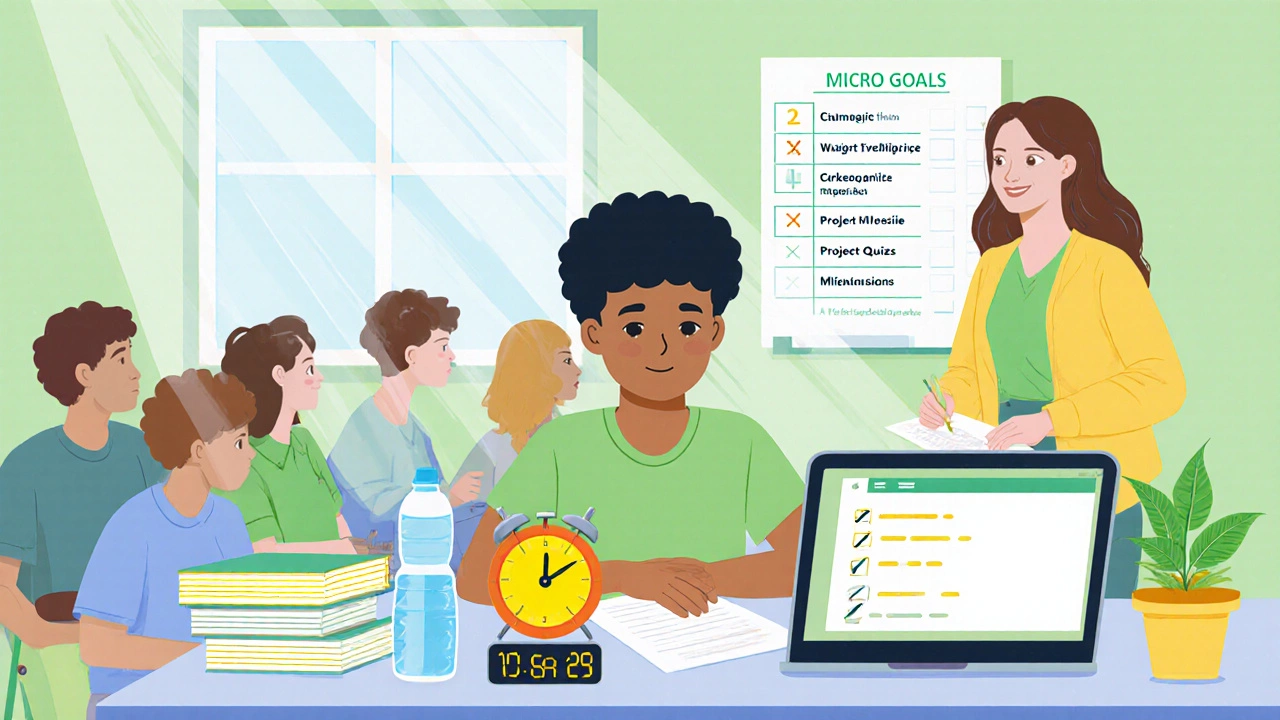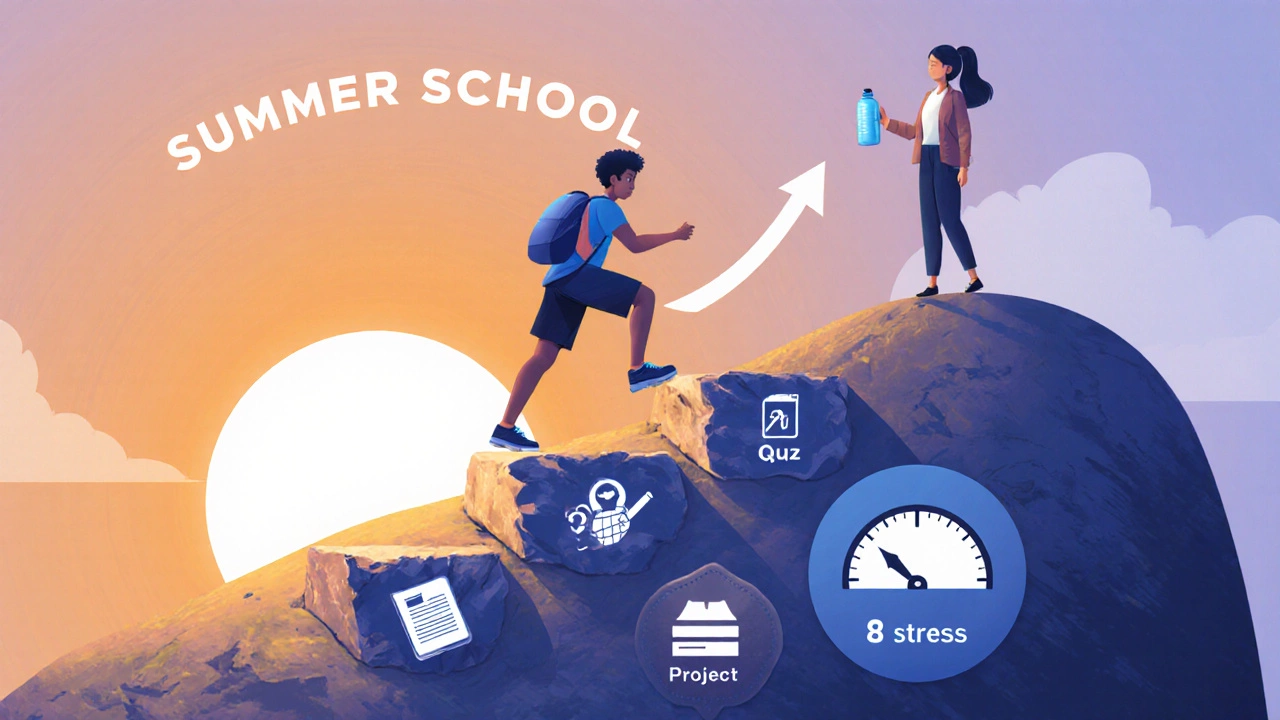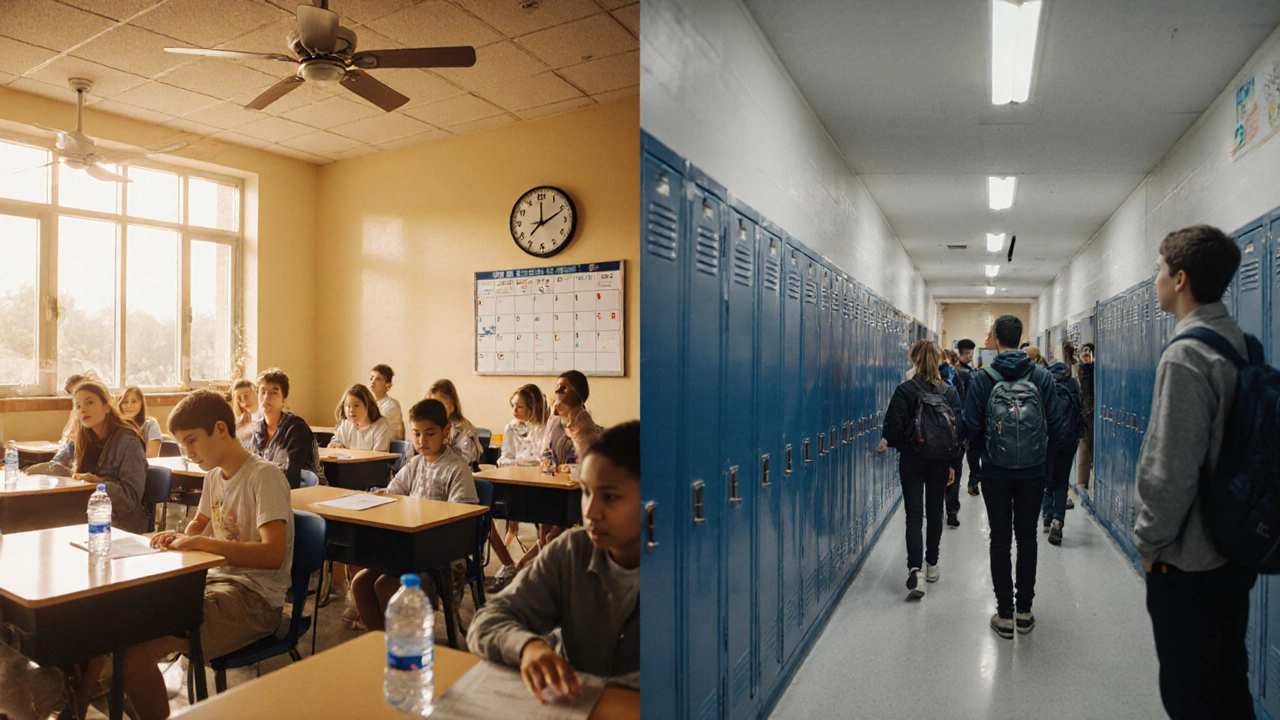Summer School vs. Regular School Difficulty Comparator
Summer School
Compressed curriculum, longer daily sessions, frequent assessments
Regular School
Standard pacing, balanced workload, spaced assessments
Difficulty Factors Comparison
| Factor | Summer School | Regular School |
|---|---|---|
| Instructional Hours per Day | 4-6 hours | 1-2 hours (per class) |
| Curriculum Coverage | Full semester content compressed | Standard semester pacing |
| Assessment Frequency | Weekly quizzes, project milestones | Monthly or term-based tests |
| Class Size | Often smaller (15-20 students) | Varies, typically larger (25-30) |
| Student Stress Levels | Higher peaks due to intensity | More steady, lower peaks |
| Extracurricular Opportunities | Limited – focus is academic | Plenty – sports, clubs, arts |
Personal Difficulty Assessment
Answer these questions to estimate how difficult summer school might be for you:
Your Personal Difficulty Estimate:
When the heat rolls in and the regular school calendar pauses, many families wonder whether the accelerated program that follows is a smooth ride or a steep hill. The question isn’t just about extra homework; it’s about the whole learning experience. Below we break down the factors that make summer school difficulty feel different, compare it side‑by‑side with the traditional school year, and give you concrete tips to thrive no matter the schedule.
Key Takeaways
- Summer school compresses the same curriculum into a shorter period, raising daily intensity.
- Class hours are longer but often include more hands‑on projects and flexible pacing.
- Assessment frequency can be higher, with weekly quizzes replacing monthly tests.
- Student support varies; smaller class sizes can mean more personal attention.
- Strong time‑management and self‑care habits are essential for success in both settings.
What Exactly Is Summer School?
Summer School is a short‑term academic program that runs during the school break, typically lasting 4‑8 weeks. It aims to cover the same learning objectives as a regular semester but packs them into a tighter schedule. Many districts offer it for credit recovery, advanced coursework, or enrichment. Key attributes include:
- Accelerated pacing - each week often represents a month of regular instruction.
- Extended daily sessions - classes can run 4‑6 hours per day.
- Focused curriculum - teachers prioritize core concepts and essential skills.
- Varied assessment style - frequent quizzes, project milestones, and occasional cumulative exams.

How Does Regular School Operate?
Regular School follows the traditional academic calendar, usually spanning 9‑10 months with holidays sprinkled throughout. Its structure gives students more time to absorb material, revisit topics, and engage in extracurricular activities. Core characteristics include:
- Standard pacing - a semester typically lasts 15‑18 weeks.
- Shorter daily lessons - most classes run 45‑90 minutes.
- Balanced workload - homework, projects, and tests are spaced out.
- Broad assessment mix - unit tests, term exams, and occasional oral presentations.
Direct Comparison of Core Factors
| Factor | Summer School | Regular School |
|---|---|---|
| Instructional Hours per Day | 4‑6 hours | 1‑2 hours (per class) |
| Curriculum Coverage | Full semester content compressed | Standard semester pacing |
| Assessment Frequency | Weekly quizzes, project milestones | Monthly or term‑based tests |
| Class Size | Often smaller (15‑20 students) | Varies, typically larger (25‑30) |
| Teacher Support | More one‑on‑one time due to size | Support spread across more students |
| Student Stress Levels | Higher peaks due to intensity | More steady, lower peaks |
| Extracurricular Opportunities | Limited - focus is academic | Plenty - sports, clubs, arts |

What Real Students Say
A 2023 survey of 1,200 high‑school students across the United States revealed that 63% felt the workload in summer school was “more demanding” than their regular semester. However, 48% also reported “greater clarity on what they needed to learn” because teachers narrowed the focus to essential concepts. Another study from the National Center for Education Statistics (NCES) noted that students who completed summer school showed a 5% average gain in GPA compared to peers who skipped the program, suggesting the intensity can translate into academic improvement when managed well.
Tips to Manage the Higher Intensity
Whether you’re a student facing a packed summer schedule or a parent guiding a teen, the following strategies can keep stress in check and boost performance.
- Plan Micro‑Goals: Break each week into bite‑sized objectives. A two‑hour study block followed by a short quiz can feel less overwhelming than a whole chapter at once.
- Use the Pomodoro Technique: 25‑minute focused study periods with 5‑minute breaks help maintain concentration during long class days.
- Prioritize Sleep: Research from Sleep Medicine Reviews (2022) shows that students who get 8‑9hours nightly perform 12% better on cumulative tests.
- Leverage Teacher Office Hours: Summer classes often have fewer students per teacher, so schedule quick check‑ins for clarification.
- Stay Hydrated and Move: Short walks or stretches between lessons keep energy levels stable, especially in hot weather.

When Summer School Might Actually Be Easier
Not every student finds the condensed format tougher. Certain scenarios flip the script:
- Focused Learning Environment: Without the distraction of a full‑scale school day, students can dive deeper into topics that interest them.
- Smaller Class Sizes: More personalized feedback can accelerate understanding, making the overall workload feel lighter.
- Motivated Self‑Learners: Those who thrive on fast‑paced challenges often finish projects sooner and enjoy the momentum.
Bottom Line - Is Summer School Harder?
In most cases, the answer leans toward “yes.” The compressed schedule, longer daily hours, and frequent assessments create a higher intensity compared to the regular academic year. However, the difficulty isn’t a universal verdict. A student’s personal learning style, support network, and coping habits shape the lived experience. If you can harness the focused environment, use the smaller class sizes to your advantage, and adopt solid time‑management practices, the challenge can become a catalyst for growth rather than a roadblock.
Frequently Asked Questions
Do I earn the same credits in summer school as in regular school?
Yes. Accredited summer programs award the same credit units as their regular‑year counterparts, provided you meet the assessment criteria.
Can summer school replace a whole semester?
In many districts, a full‑semester course can be completed in a summer session, especially for core subjects like Math, Science, and English.
How can I stay motivated during the intense summer schedule?
Set clear, short‑term goals, celebrate small wins, and keep a visual progress tracker. Mixing study with short, enjoyable breaks also helps maintain momentum.
Are teachers in summer school more strict?
Strictness varies by school, but many teachers enforce tighter deadlines to keep the accelerated pace on track. Clear communication about expectations upfront can ease the pressure.
What extra resources can help me succeed?
Online tutorials, flashcard apps, and study groups are valuable. Many districts also provide supplemental worksheets and past quizzes for extra practice.
